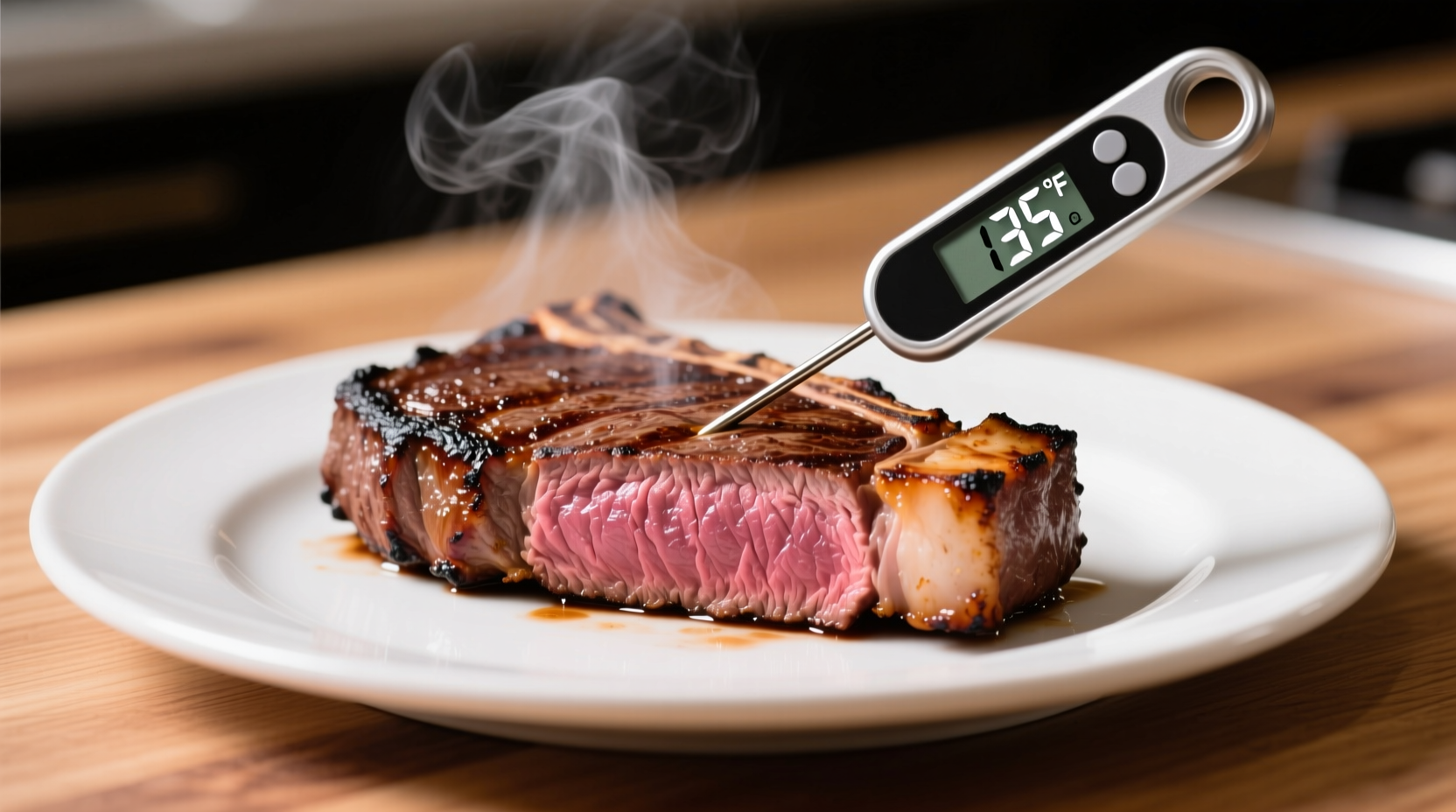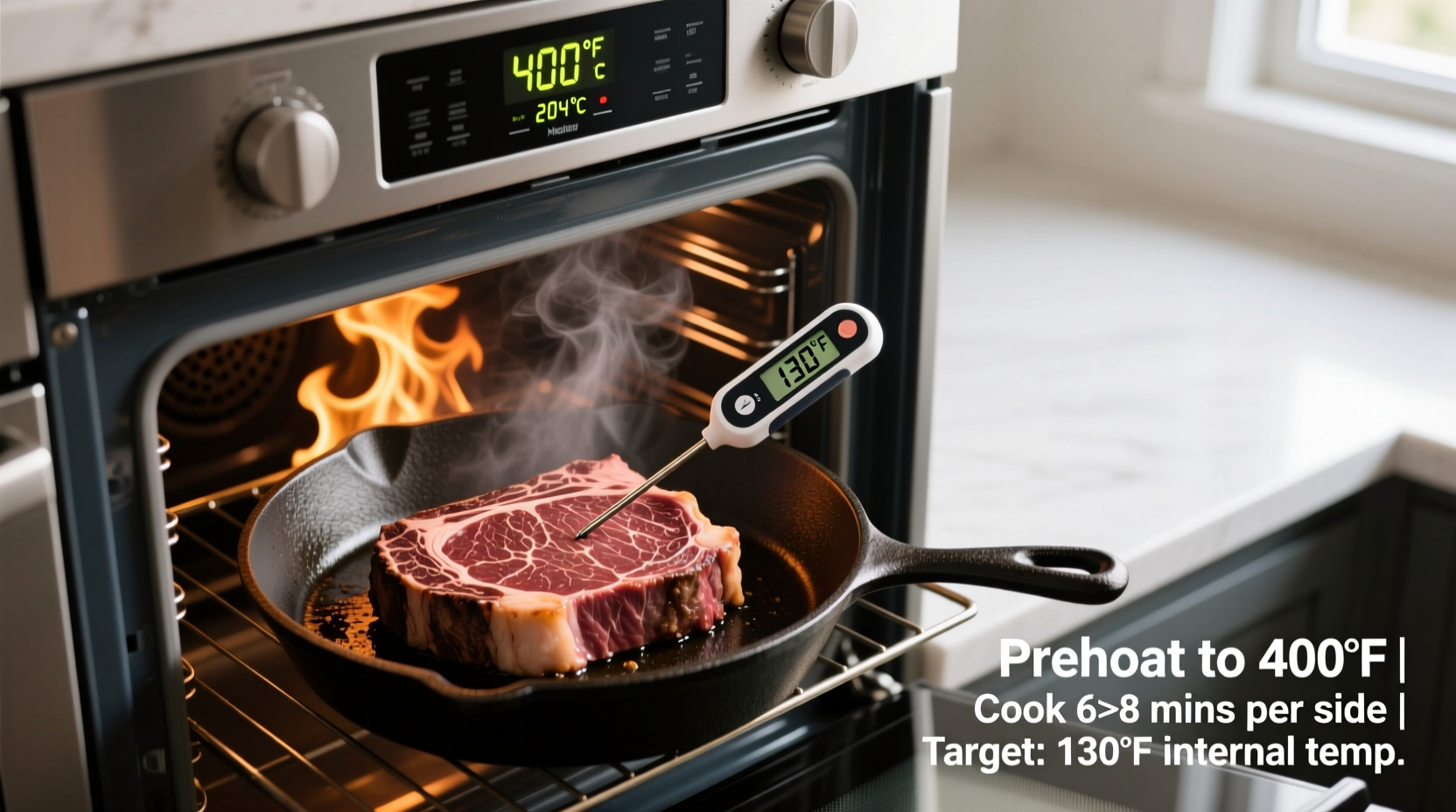The Science Behind Steak Oven Temperatures
Understanding oven temperature is crucial for perfect steak results. Unlike grilling where direct heat creates rapid searing, oven cooking relies on consistent ambient heat to gently cook the interior while preserving the exterior crust. The USDA Food Safety and Inspection Service confirms that proper internal temperatures eliminate food safety risks while maintaining optimal texture.

Temperature Guide for Different Steak Cuts
| Steak Cut | Recommended Oven Temp | Rare (120-125°F) | Medium Rare (130-135°F) | Medium (140-145°F) |
|---|---|---|---|---|
| Ribeye (1.5") | 375°F (190°C) | 12-14 min | 14-16 min | 16-18 min |
| Filet Mignon (2") | 350°F (177°C) | 14-16 min | 16-18 min | 18-20 min |
| New York Strip (1.5") | 400°F (204°C) | 10-12 min | 12-14 min | 14-16 min |
| Thick Cut (2.5"+) | 275°F (135°C) | 25-30 min | 30-35 min | 35-40 min |
Why Temperature Precision Matters
Professional chefs have evolved their approach to oven-cooked steak through decades of refinement. In the 1980s, high-heat methods often resulted in overcooked exteriors. Modern understanding of thermal dynamics, documented by the American Meat Science Association, shows that lower temperatures (275-350°F) provide more even cooking for thick cuts, while higher temperatures (400-450°F) work better for thinner steaks when combined with proper searing.
Your Step-by-Step Oven Steak Process
Preparation Essentials
Bring steak to room temperature for 45-60 minutes before cooking. This critical step, verified by culinary research at the Culinary Institute of America, ensures even cooking. Pat the surface completely dry - moisture is the enemy of proper searing. Season generously with coarse salt and freshly ground pepper at least 40 minutes before cooking to allow proper flavor penetration.
The Searing Step (Optional but Recommended)
For best results when cooking steak in oven, start with a cast-iron skillet on high heat. Sear for 2-3 minutes per side until a deep brown crust forms. This Maillard reaction creates complex flavor compounds that oven cooking alone cannot achieve. According to the Journal of Food Science, this initial sear at 450°F+ develops over 600 flavor compounds through non-enzymatic browning.
Oven Cooking Process
After searing, transfer the skillet directly to your preheated oven. For thinner cuts (under 1.5"), use the higher end of temperature range (400-450°F) for faster cooking. For thicker cuts, reduce to 325-350°F to prevent the exterior from overcooking before the center reaches desired temperature. Insert an instant-read thermometer horizontally into the thickest part, avoiding bone or fat.
Resting and Final Temperature
Remove steak from oven when thermometer reads 5-10°F below your target temperature. During the 8-10 minute resting period, carryover cooking will raise the internal temperature. This phenomenon, confirmed by the USDA's cooking guidelines, ensures perfect doneness without overcooking. Never skip resting - it allows juices to redistribute throughout the meat.
Common Mistakes to Avoid
Opening the oven too frequently: Each time you open the oven, temperature drops 25-50°F, extending cooking time and creating uneven results. Use the oven light and window instead.
Guessing doneness: Relying on touch or time alone leads to inconsistent results. An instant-read thermometer is the only reliable method for determining steak doneness.
Incorrect oven placement: Position the oven rack in the center for even heat distribution. For convection ovens, reduce temperature by 25°F as fan circulation speeds cooking.
Special Considerations for Different Scenarios
When cooking without initial sear: Start at higher temperature (425°F) for the first 5 minutes to encourage browning, then reduce to 350°F for remaining cooking time. This method works well for those without cast-iron cookware.
For frozen steak: Increase cooking time by 50% and use lower temperature (300°F) to prevent exterior overcooking. The Food Safety and Inspection Service confirms this method is safe when proper internal temperatures are reached.
When using convection oven: Reduce standard temperatures by 25°F as the circulating air cooks more efficiently. Convection settings can reduce cooking time by 20-25%.











 浙公网安备
33010002000092号
浙公网安备
33010002000092号 浙B2-20120091-4
浙B2-20120091-4